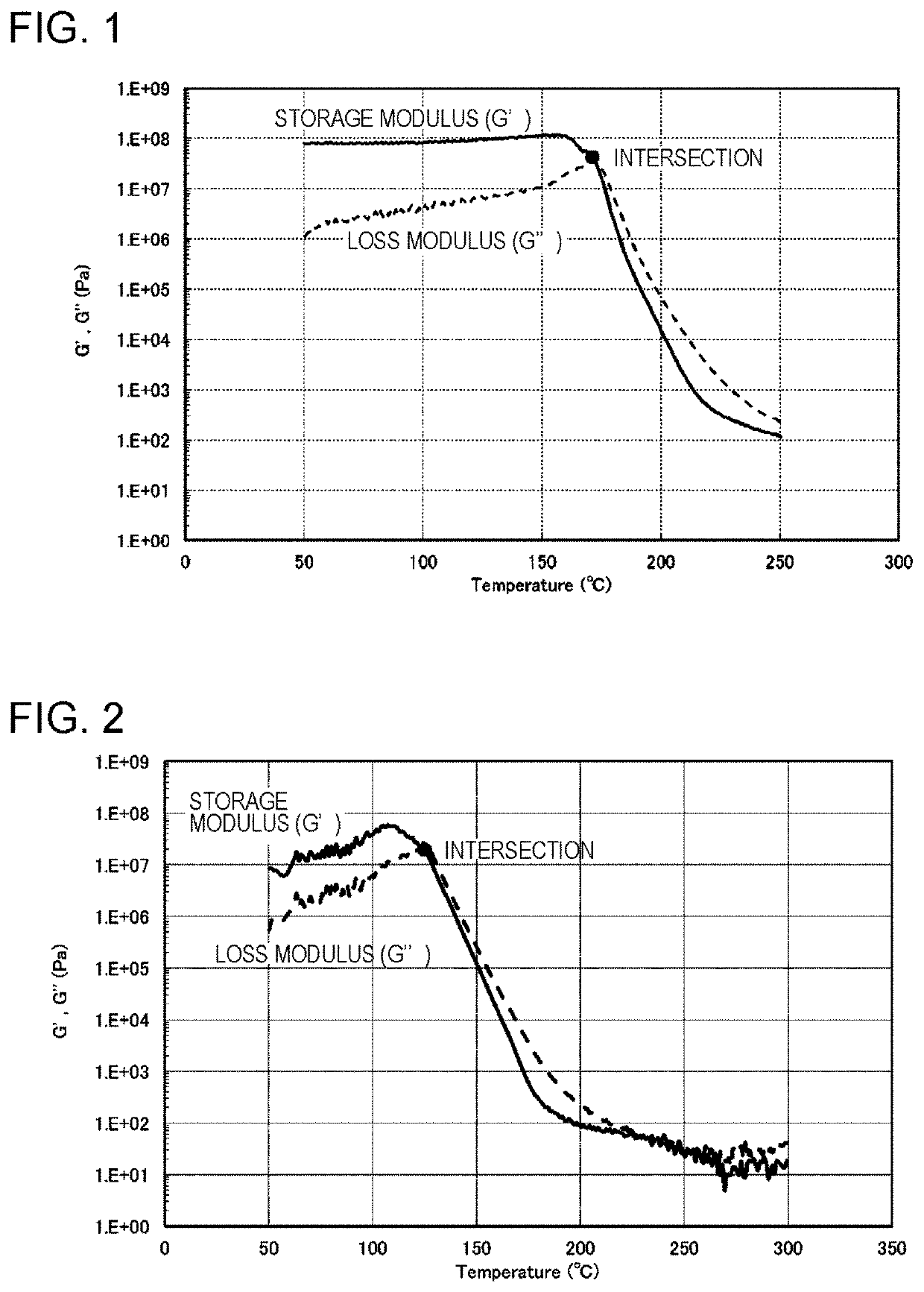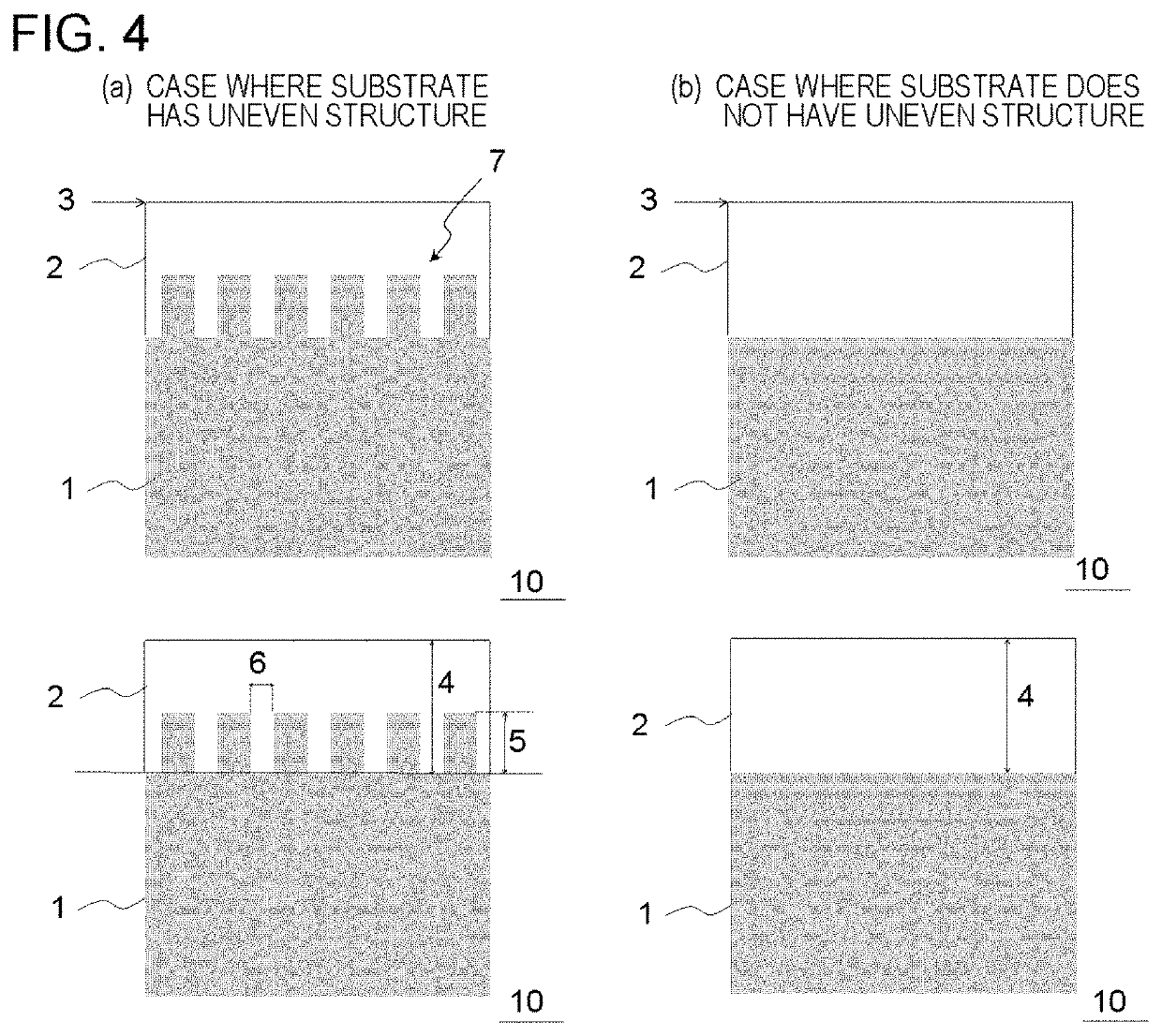Resin material for forming underlayer film, resist underlayer film, method of producing resist underlayer film, and laminate
a technology of resist and underlayer film, which is applied in the direction of instruments, photomechanical devices, coatings, etc., can solve the problems of irregular reflection or standing waves of semiconductor substrates in lithography steps carried out using arf excimer lasers which are a current mainstream and have been major problems, and achieve excellent flatness, suppressed volatile components, and sufficient optical characteristics.
- Summary
- Abstract
- Description
- Claims
- Application Information
AI Technical Summary
Benefits of technology
Problems solved by technology
Method used
Image
Examples
example 1
[0346]In a 5 L autoclave provided with a magnetic stirrer in a nitrogen atmosphere, 320 g (2 mol) of tetracyclo[4.4.0.12,5. 17,10]-3-dodecene having the structural unit [A], 304 g (2 mol) of 4,10-dioxy-tricyclo[5.2.1.02,6]-8-decene-3-one having the structural unit [B], and 21 g (0.25 mol) of 1,5-hexadiene were dissolved in 3.4 kg of tetrahydrofuran (hereinafter, referred to as THF), and the solution was stirred.
[0347]As a ring opening metathesis polymerization catalyst, 612 mg (0.8 mmol) of Mo (N-2, 6-Pri2C6H3) (CHCMe2Ph) (OCMe(CF3)2)2 was added thereto to cause a reaction at 60° C. for 3 hours. Thereafter, 173 mg (2.4 mmol) of n-butylaldehyde was added thereto, and the solution was cooled, thereby obtaining 4.0 kg of a ring opening metathesis polymer solution. In the obtained polymer, the polymerization rate thereof was 100%, the Mw was 5700, the ratio of Mw / Mn was 1.61, and the molar ratio ([A] / [B]) of the structural unit [A] to the structural unit [B] which was analyzed by 1HNMR ...
example 2
[0357]2.5 kg of a ring opening metathesis polymer solution was obtained according to the same method as that in Example 1 except that the monomer having the structural unit [A] was changed to 8-methoxycarbonyl-tetracyclo[4.4.0.12,5.17,10]-3-dodecene. In the obtained polymer, the polymerization rate thereof was 100%, the Mw was 6300, the ratio of Mw / Mn was 1.50, and the molar ratio ([A] / [B]) of the structural unit [A] to the structural unit [B] which was analyzed by 1HNMR was 50 / 50.
[0358]Next, the polymer was precipitated and dried according to the same method as that in Example 1 to obtain a white power solid (polymer 2).
[0359]The glass transition temperature of the polymer 2 was 150° C. Further, the amount of the volatile components generated in the polymer 2 was 0.0% by mass.
[0360]In addition, the temperature at the intersection between the storage modulus (G′) curve and the loss modulus (G″) curve to be calculated from the results obtained by measuring the solid viscoelasticity o...
example 3
[0366]4.1 kg of a ring opening metathesis polymer solution was obtained according to the same method as that in Example 1 except that the monomer having the structural unit [A] was changed to 8-(1-ethylcyclopentyloxycarbonyl)-tetracyclo[4.4.0.12,5.17,10]-3-dodecene. In the obtained polymer, the polymerization rate thereof. was 100%, the Mw was 7200, the ratio of Mw / Mn was 1.50, and the molar ratio ([A] / [B]) of the structural unit [A] to the structural unit [B] which was analyzed by IFINMR was 50 / 50.
[0367]Next, the polymer was precipitated and dried according to the same method as that in Example 1 to obtain a white power solid (polymer 3).
[0368]The glass transition temperature of the polymer 3 was 130° C.
[0369]Further, the amount of the volatile components generated in the polymer 3 was 0.0% by mass.
[0370]In addition, the temperature at the intersection between the storage modulus (G′) curve and the loss modulus (G″) curve to be calculated from the results obtained by measuring the ...
PUM
| Property | Measurement | Unit |
|---|---|---|
| temperature | aaaaa | aaaaa |
| frequency | aaaaa | aaaaa |
| temperature | aaaaa | aaaaa |
Abstract
Description
Claims
Application Information
 Login to View More
Login to View More - R&D
- Intellectual Property
- Life Sciences
- Materials
- Tech Scout
- Unparalleled Data Quality
- Higher Quality Content
- 60% Fewer Hallucinations
Browse by: Latest US Patents, China's latest patents, Technical Efficacy Thesaurus, Application Domain, Technology Topic, Popular Technical Reports.
© 2025 PatSnap. All rights reserved.Legal|Privacy policy|Modern Slavery Act Transparency Statement|Sitemap|About US| Contact US: help@patsnap.com



